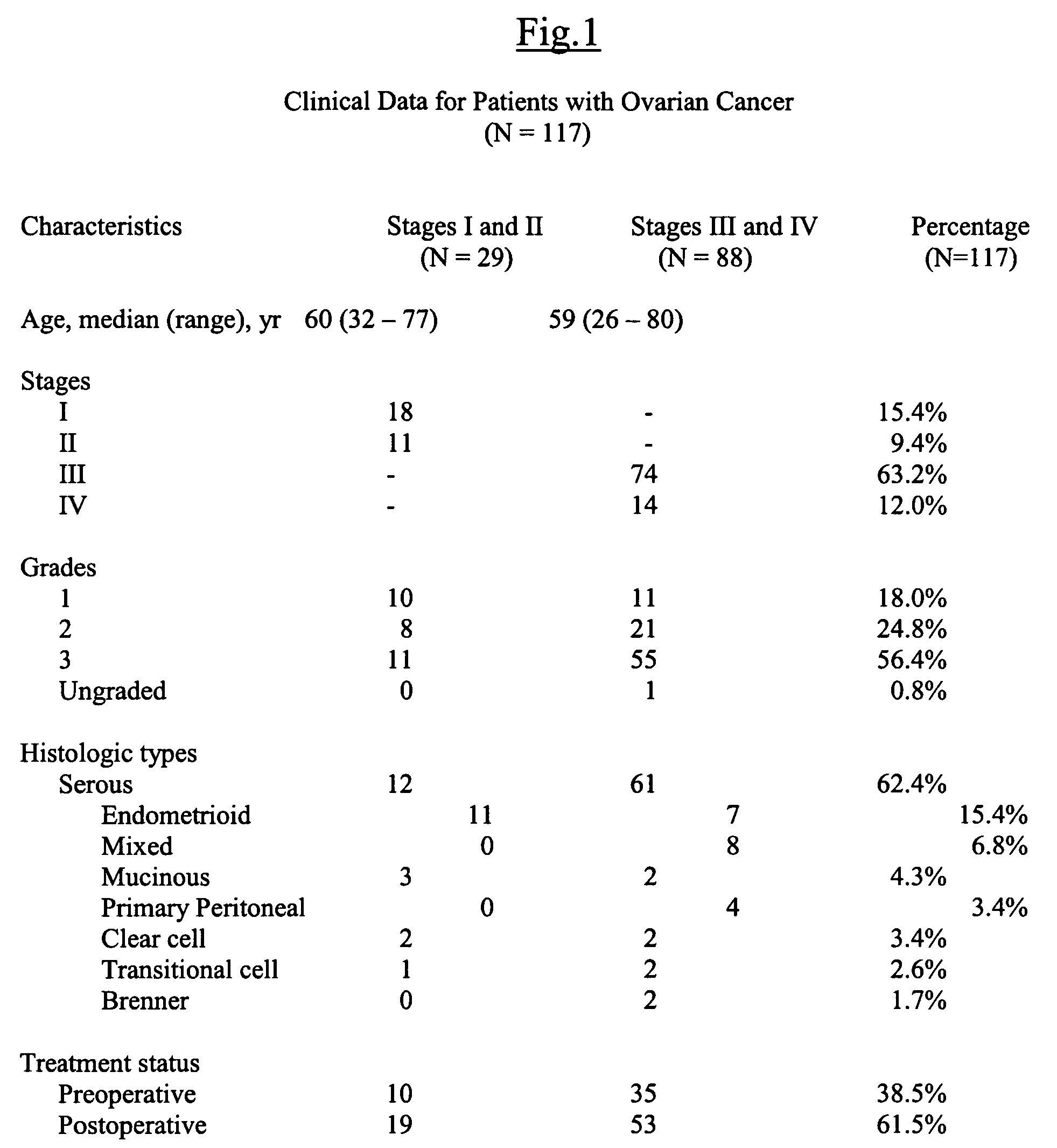Lysophospholipids as biomarkers of ovarian cancer
a biomarker and ovarian cancer technology, applied in the field of lysophospholipids as biomarkers of ovarian cancer, can solve the problems of no proven effective method for early detection of ovarian cancer through biomarkers, imaging, or other means, and achieve the effect of improving survival
- Summary
- Abstract
- Description
- Claims
- Application Information
AI Technical Summary
Benefits of technology
Problems solved by technology
Method used
Image
Examples
example
[0024]Patient-derived biologic specimens were collected under protocols approved by the Institutional Review Board of the University of South Florida and all participants provided written informed consent.
[0025]Whole blood samples were obtained preoperatively in EDTA tubes by routine venipuncture of women undergoing surgery for suspected ovarian cancer in Hillsborough and Pinellas counties, Florida between Dec. 13, 2000 and Oct. 30, 2002. All women ages 18-80 undergoing surgery for suspected ovarian cancer in the two counties during the defined period were regarded as eligible for entry into the study. No patients who were asked refused to participate. Of the preoperative samples obtained, 45 were from women who were later confirmed to have ovarian cancer or primary peritoneal cancer (ovarian cancer patients) (median age 60 years, range 33-79). Samples were obtained postoperatively from ovarian cancer patients from the same eligibility pool (N=94, median age 59, range 26-80), includ...
PUM
| Property | Measurement | Unit |
|---|---|---|
| Molar density | aaaaa | aaaaa |
| Molar density | aaaaa | aaaaa |
| Mass | aaaaa | aaaaa |
Abstract
Description
Claims
Application Information
 Login to View More
Login to View More - R&D
- Intellectual Property
- Life Sciences
- Materials
- Tech Scout
- Unparalleled Data Quality
- Higher Quality Content
- 60% Fewer Hallucinations
Browse by: Latest US Patents, China's latest patents, Technical Efficacy Thesaurus, Application Domain, Technology Topic, Popular Technical Reports.
© 2025 PatSnap. All rights reserved.Legal|Privacy policy|Modern Slavery Act Transparency Statement|Sitemap|About US| Contact US: help@patsnap.com



